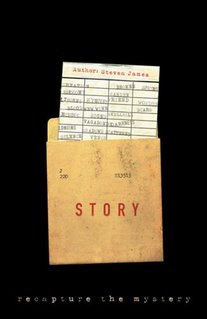The Little Mermaid (a parable)
This is from Steven James' book Story: recapture the mystery:
 In Has Christian Andersen's original tale of "The Little Mermaid" (not the Disney version), a beautiful young mermaid has fallen in love with a human prince. The mermaid is a glorious singer beneath the sea, but she gives up her voice to be able to become human and love the prince. The deal is, if she can woo him, then she can remain human and receive an eternal soul. But if he marries another woman, the little mermaid will turn into sea foam, the fate of all mermaids.
In Has Christian Andersen's original tale of "The Little Mermaid" (not the Disney version), a beautiful young mermaid has fallen in love with a human prince. The mermaid is a glorious singer beneath the sea, but she gives up her voice to be able to become human and love the prince. The deal is, if she can woo him, then she can remain human and receive an eternal soul. But if he marries another woman, the little mermaid will turn into sea foam, the fate of all mermaids.Well, despite all her devotion to him, the prince's heart remains enamored with a different woman, a princess whom he believes rescued him from a shipwreck. However, the little mermaid was really the one who had saved him. She wants desperately to tell him that she was his savior and that she loves him, but she has no voice above the sea, no words he can hear.
In the end, all three are sailing back to the prince's palace for his wedding to the other woman. The little mermaid is about to turn back into sea foam when her sisters swim to the water's surface and offer her a knife and a choice: if she will take the prince's life, she need not give up her own. The magic can be reversed; she can become a mermaid again if only she will kill the prince. One of them must die before daybreak.
Everyone else is asleep on the boat. Silently the little mermaid approaches the prince and finds him in the arms of the other woman. As Hans Christian Andersen writes,
The knife trembled in the hand of the little mermaid: then she flung it far away from her into the waves; the water turned red where it fell, and the drops that spurted up looked like blood. She cast one more lingering, half-fainting glance at the prince, and then threw herself from the ship into the sea, and thought her body was dissolving into foam. The sun rose above the waves, and his warm rays fell on the cold foam of the little mermaid.1
The prince knew nothing of her sacrifice, nothing of her love. He didn't know she had rescued him, giver up her beautiful voice to become like him, and then exchanged her life for his. All this went on while he pursued another woman. She sacrificed all for her prince because she loved him, yet he never returned her love.
When the gospel is told like that, I can understand it.
God's love didn't happen in a courtroom but on a cross where Jesus threw himself from the ship and into the sea. The story I see woven all throughtout Scripture is a tale of passion and sacrifice--not a deal brokered between a lawyer and a judge. It was a gift given from a lover to his beloved: in one final act of sacrificial love, he offers his life so that she might live.
We have a God who would let himself be nailed to a cross for his beloved. And there he would dare to die for her. For us.
Hold onto this moment. See him hanging there, between heaven and earth. Between God and humanity. See him dying there on Skull Hill. Don't turn away. Easter will never make sense without this moment.2
----------
1. Hans Christian Andersen, The Complete Hans Christian Andersen Fairy Tales, ed. Lilly Owens.
2. Stephen James, Story: recapture the mystery.
Labels: the good news, theology



1 Comments:
Taylor, your mom and I have read and enjoyed your thoughts and insights. Your writing skills have certainly improved since Mr. Biggers. All our love,
Mom and Dad
Post a Comment
<< Home